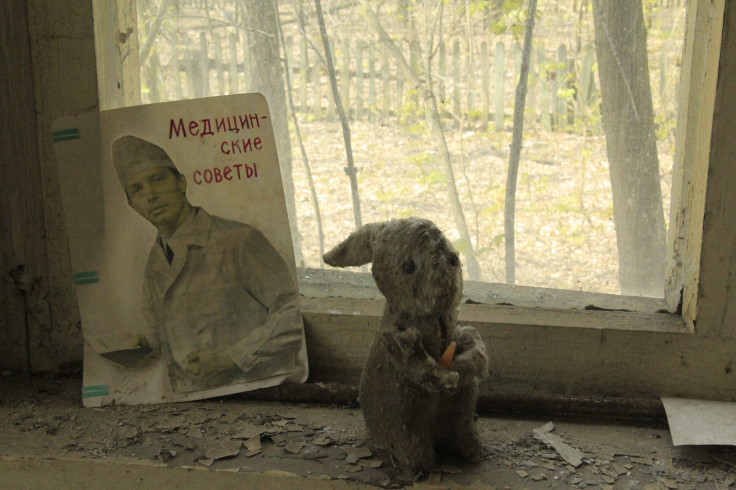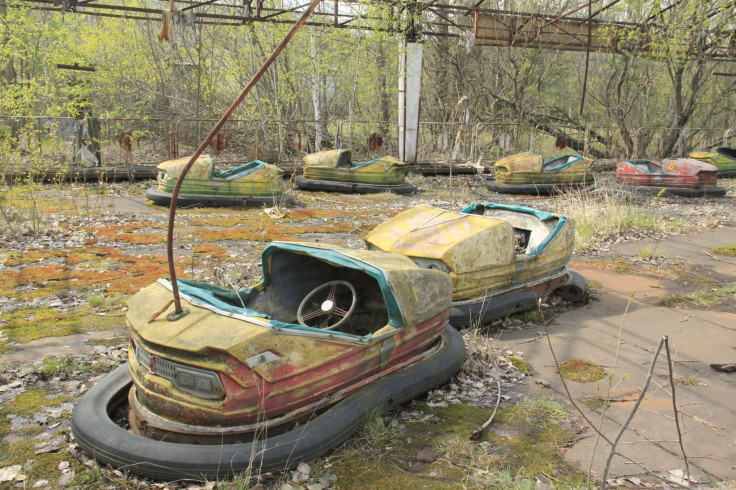(Wild)Life In A Nuclear Wasteland: 28 Years After the Chernobyl Disaster

CHERNOBYL, Ukraine -- Almost three decades after the worst nuclear disaster in history unfolded here, this largely vacated region has another dubious distinction: it’s the world's first radioactive wildlife preserve. Before collapsing in the Maidan revolt that shook Ukraine earlier this year, the government of then-president Viktor Yanukovich had even considered naming Chernobyl a biosphere reserve.
Regardless of official labels, the Chernobyl Exclusion Zone, at approximately 1,000 square miles or 2,600 square kilometers, is the size of Luxembourg -- easily the largest wildlife refuge in Europe. It’s also situated close to what could become a war zone, with Russian troops amassing on the eastern border of Ukraine.
Another ex-Soviet border, with Belarus, is just 12 miles (20 kilometers) away, and the Ukrainian army keeps batteries of missiles pointed at the country’s northern neighbor, a Russian ally.
But in the fields around the reactor that exploded on April 26, 1986, the scene is one of nature-preserve-meets-Soviet-ghost-town. Among the species that roam the area are Przewalski horses, a wild breed that is extremely rare in Europe, grazing unmolested. The horses were introduced artificially to test wildlife in a radioactive environment, and their population swelled dramatically, surpassing 100 animals. Now they’re down to 17, but it wasn’t radiation that killed them. It was poachers, along with attacks by predators that have returned in force to the reserve -- including wolves, a rare sight elsewhere on the continent.
Chernobyl, where the explosion sparked fear across Europe (and led to a referendum banning nuclear power in Italy), hasn’t just brought back near-extinct animals: It’s the last vestige of a now-extinct political system. The Soviet Union imploded five years after Chernobyl’s reactor No. 4 exploded, but here it still exists in a nuclear vacuum, where wild animals hold sway.
The town of Chernobyl itself and the larger Pripyat, which at the time of the explosion had a population of 50,000 plant employees and their families, are eerie ghost towns in more ways than one. In addition to being cordoned off due to radioactivity, the area is a time capsule of the Soviet era, with its stark architecture, Communist symbology, and signs in the distinct typeface that was employed east of the Danube.
A couple of rusting hammer-and-sickles crown buildings with broken windows, and in the early 1990s, people motivated by more urgent concerns than death by radiation looted homes in the exclusion zone, making off with wiring, pipes and other infrastructure. In the rusting hulks they left, the Pompeii of the nuclear age is reverting to an era where there weren’t yet people, let alone giant atom-fueled power stations.
The white bleachers of the Pripyat stadium now overlook a budding forest with trees festooned by junglelike vines. At the swimming pool, a big chronometer faces diving boards at the opposite end of the empty Olympic-size basin. Chirping birds interrupt the sound of leaks. Tiny stalactites the color of rust line the ceilings of locker rooms. Atop the building outside, the hands of two adjoining clocks have died at different hours.
Inside the town’s school, opposite the swimming pool and across a temperate jungle that used to be a park, the floor is littered with heaps of gas masks. Some dangle from the ceiling, like creepy heads. They were not meant for the radioactive cloud that ended life here; they were standard school equipment in the USSR, to be used in case of nuclear or chemical war with the United States.
But the residents of Pripyat did not imagine that nuclear death would come from the powerplant next door, not a NATO missile. As the reactor blew up in the darkness, some people ran to a bridge overlooking the reactor to watch the fireworks. The spectators on what is now known as the “bridge of death” are said to have died within days.

As inadequately trained technicians were carrying out a test at the nuclear plant, a sudden power surge blew up reactor 4. According to the International Atomic Energy Agency, the explosion that tore the roof off the building was 400 times more potent than the Hiroshima bomb. Months later, workers had built, at huge risk, a giant concrete structure known as a sarcophagus, encasing the remains of the reactor, sealing in the radioactivity.
Now, as a new sarcophagus is being built, barn swallows and other birds nest in the crevices of the reactor’s concrete tomb.
Along with the animals, about 200 brave (or reckless) humans have returned to their houses in the Exclusion Zone, where they farm and keep cattle as they did before the disaster.
Around them, the Exclusion Zone looks like an idyllic dream. Buildings are overgrown with greenery; butterflies flutter above parking lots turned into wildflower meadows; lizards scurry over the rusting signs; packs of wolves roam freely. One begins to wonder if humans were more destructive to animals than radioactivity.
But the takeover by nature isn’t all good news. There are serious dangers.
The forests of poisoned trees that have been soaking up plutonium, iodine, strontium and cesium can feed nuclear clouds in case of a forest fire. The gamma-ray radiation meters of the guide who leads visitors through the ruins beeps when he approaches trees.
Three hundred firemen stationed in the Exclusion Zone would be the first line of defense should any problem arise. They would follow in the tradition of the first six firemen who died in the immediate aftermath of the explosion and who prevented, unbeknownst to them, a larger disaster. According to physicist Vassili Nesterenko, had the atomic core ignited, Minsk, the capital of Belarus with two million inhabitants, would have been obliterated and much of Europe would have been rendered unlivable.
The omen may have been spelled out in the place’s very name. Chernobyl, our guide said, means “wormwood,” a name with apocalyptic resonances, from the biblical book of Revelation (8:10-11):
“And the third angel sounded, and there fell a great star from heaven, burning as it were a lamp, and it fell upon the third part of the rivers, and upon the fountains of waters; And the name of the star is called Wormwood: and the third part of the waters became wormwood; and many men died of the waters, because they were made bitter.”
The Ukrainian version of the passage uses a different word for “Wormwood”: it calls it “Polyn.” But speculation on biblical meaning is hardly necessary when, before one’s eyes, there lies the very tangible apocalypse of Chernobyl -- with songbirds.
© Copyright IBTimes 2024. All rights reserved.





















